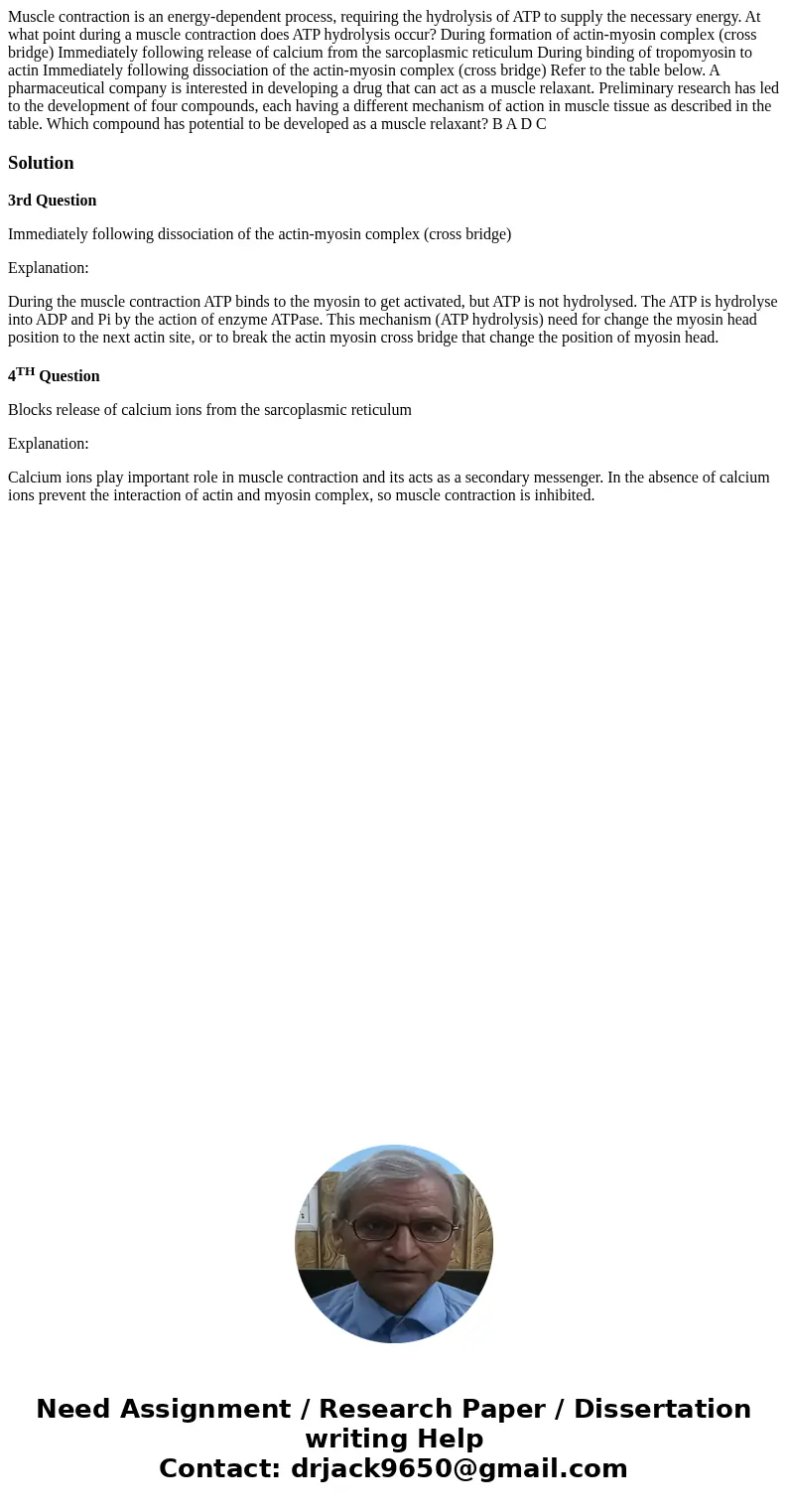Muscle contraction is an energydependent process requiring t
Muscle contraction is an energy-dependent process, requiring the hydrolysis of ATP to supply the necessary energy. At what point during a muscle contraction does ATP hydrolysis occur? During formation of actin-myosin complex (cross bridge) Immediately following release of calcium from the sarcoplasmic reticulum During binding of tropomyosin to actin Immediately following dissociation of the actin-myosin complex (cross bridge) Refer to the table below. A pharmaceutical company is interested in developing a drug that can act as a muscle relaxant. Preliminary research has led to the development of four compounds, each having a different mechanism of action in muscle tissue as described in the table. Which compound has potential to be developed as a muscle relaxant? B A D C
Solution
3rd Question
Immediately following dissociation of the actin-myosin complex (cross bridge)
Explanation:
During the muscle contraction ATP binds to the myosin to get activated, but ATP is not hydrolysed. The ATP is hydrolyse into ADP and Pi by the action of enzyme ATPase. This mechanism (ATP hydrolysis) need for change the myosin head position to the next actin site, or to break the actin myosin cross bridge that change the position of myosin head.
4TH Question
Blocks release of calcium ions from the sarcoplasmic reticulum
Explanation:
Calcium ions play important role in muscle contraction and its acts as a secondary messenger. In the absence of calcium ions prevent the interaction of actin and myosin complex, so muscle contraction is inhibited.

 Homework Sourse
Homework Sourse